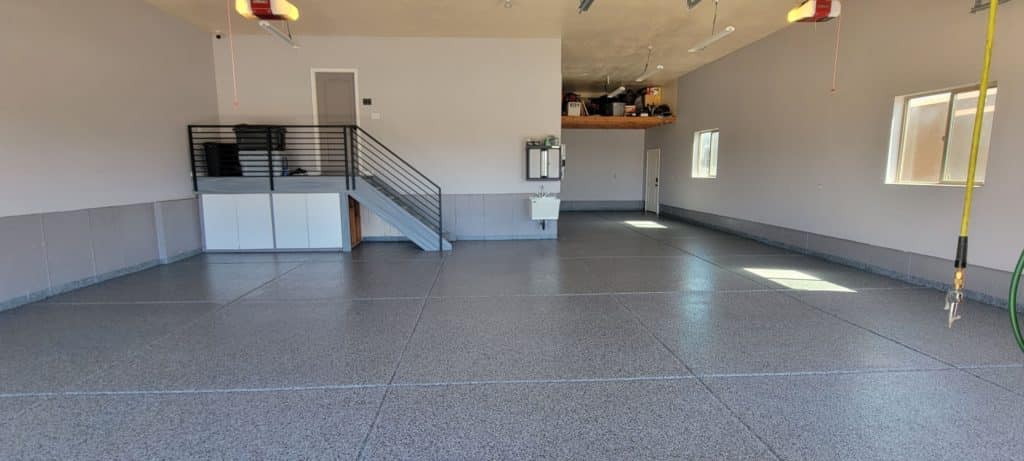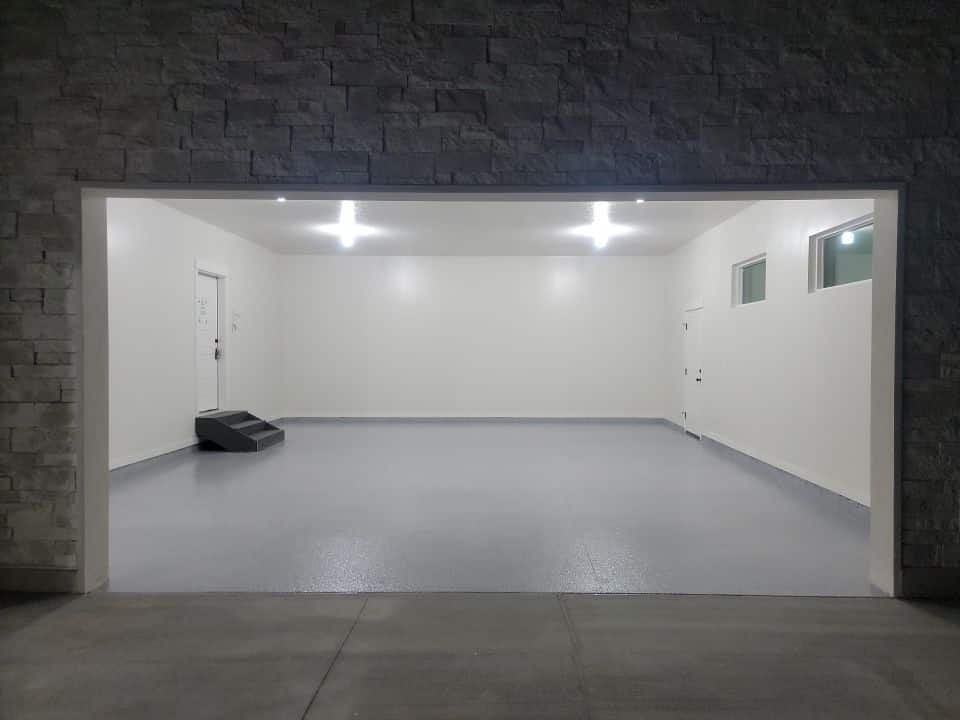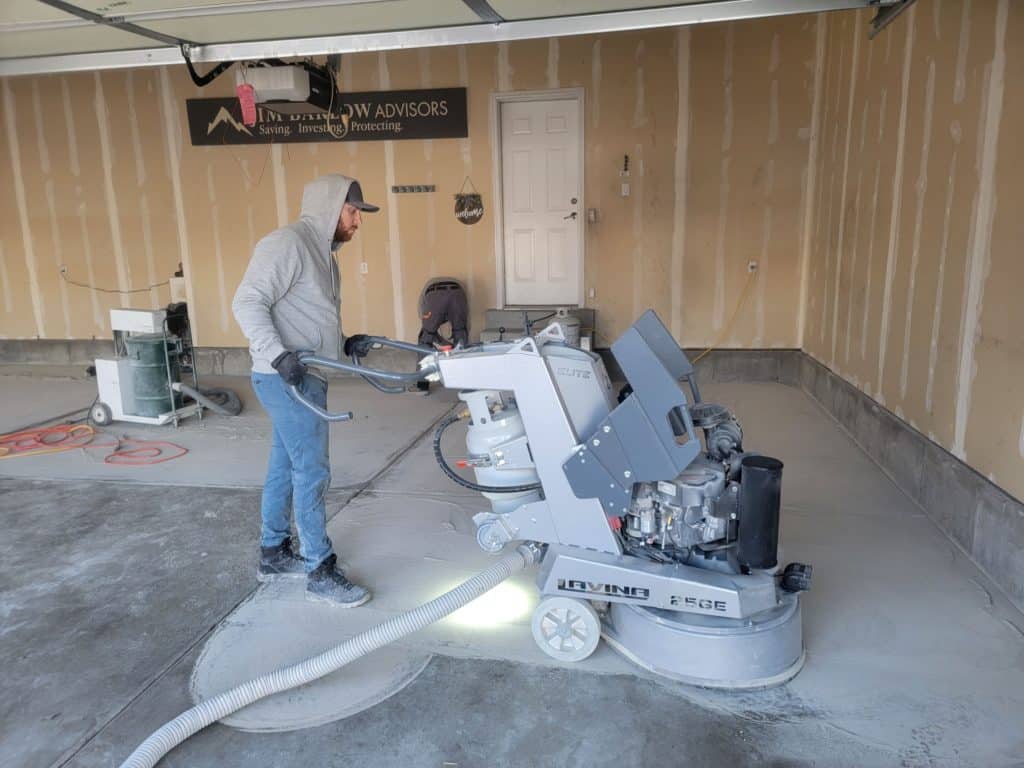Polyaspartic floor coatings are among the most durable and long-lasting floor coatings available on the current market. Known for their incredibly fast cure times, unmatched strength and durability, and easy maintenance, polyaspartic floor coatings are trusted not only by homeowners, but also by significant names such as: NASA, the Federal Aviation Administration, Ford, TopGolf, and more. Given that epoxy floor coatings dominated the floor coatings industry for so long, you may be wondering where polyaspartics came from and what makes them so special compared to the competition.
Here’s a brief history of polyaspartic floor coatings and how they’ve been developed to become one of the leading types of floor coatings available on the current market. Let’s dive into it!

Polyaspartics: Origins
In the 1930s, German scientist Otto Bayer invented polyurethane, a type of plastic that was more flexible than other options at the current time. While his colleagues were initially skeptical of his line of research, after years of developmental work, he was able to successfully synthesize polyurethane foam. Throughout his life, he influenced the development of materials using this family of plastics.
While polyurethane became a very common type of floor coating, it still had a ways to go. It was not as moisture-resistant or durable as it could be.
Enter in the Texaco Chemical Company at the beginning of the 1980s. Their mission was to further improve upon polyurethane to make it more moisture resistant and more durable. They messed with the ingredients, swapping out the hydroxyl group for an anime group, resulting in polyurea. Their development was a resounding success, as evidenced by the fact that polyurea floor coatings are still commonly used to this day.
However, polyurea still had its drawbacks, and if you obtain a polyurea floor coating for your home or business, you’ll notice them sooner or later. For instance, when applying a polyurea floor coating, you’ll notice that you need to work quickly, as it cures very fast, which means that you can’t just have an open pot of it lying around and then expect to be able to still use it later. Polyurea also struggles with a factor that plagues epoxy floor coatings too: UV stability. Both polyurea and epoxy floor coatings turn yellow after extended periods of sun exposure.
There was still work to be done in order to create the polyaspartic floor coatings we know and love today. This is where Bayer Material Science comes into the picture.

The Rise Of Polyaspartic Floor Coatings
Polyurea floor coatings worked well enough, but Bayer Material Science saw room for improvement. In the 1990s, they developed polyaspartic floor coatings. Their goal was to improve on where polyurea floor coatings failed, and they succeeded. Polyaspartic floor coatings are UV stable, and while their fast cure time necessitates professional installation, they’re able to last longer in their pots.
As the decades have passed, scientists have continued to improve upon polyaspartic floor coatings, and still search for ways to make them even better. For instance, they noticed the high VOCs of other floor coatings, and sought ways to make polyaspartic floor coatings safer to work with. How intense the VOCs of your polyaspartic floor coatings are and individual factors can vary depending on the manufacturer, but in general, they’re a longer-lasting, stronger, and more environmentally friendly option than other types of coatings on the current market.

Strength, Durability, And Beauty To Last The Years
Solid Custom Floor Coatings Utah uses RESINWERKS polyaspartic floor coatings in all of our services. RESINWERKS strives for environmentally friendly coatings that are of the highest quality and the lowest VOCs. They cure very quickly, so that after a mere 24 hours, you can reclaim your garage. They can also last up to 30 years before you need to have them reapplied. Compared to other types of floor coatings that need to be reapplied every few years, this longevity is currently unmatched.
Some types of floor coatings have hot-tire pickup and aren’t very resistant to moisture, chemicals, impact, and other causes of damages. Polyaspartic floor coatings are continually being improved upon to excel in all of these areas. You don’t need to worry about them sticking to your tires when it’s hot out, nor do you need to worry about spills staining them. Plus, with how many colors and blends they come in, not only can you rest assured that your floors are protected with polyaspartic floor coatings, but you can also ensure that they look just the way you want them to.
So, there you have it! A brief little overview of how these incredible floor coatings came to be. If you’re interested in obtaining polyaspartic floor coatings for your home or business, please don’t hesitate to contact Solid Custom Floor Coatings Utah for detail-oriented, customer-centered services. We’re here to help you achieve the floors of your dreams.





